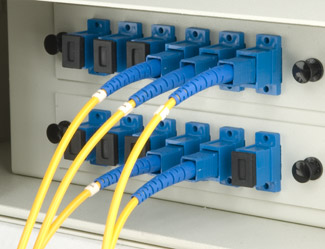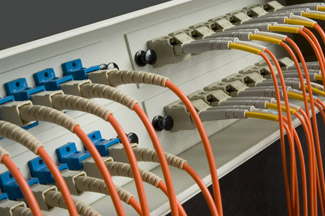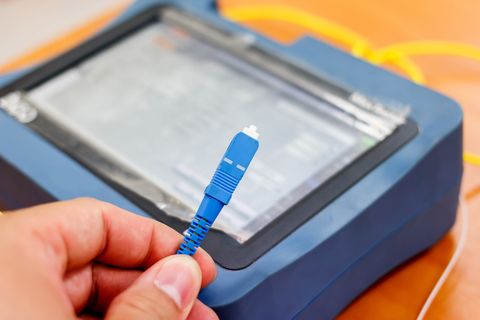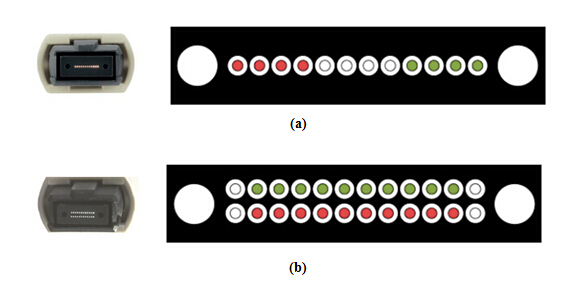Mode conditioning patch cable, also called mode conditioning patch cord (MCP), is a duplex multimode patch cable that has a small length of single mode fiber at the start of the transmission length. Designed to "condition" the laser launch and obtain an effective bandwidth closer to that measured by the overfilled launch method, the MCP allows for laser transmitters to operate at gigabit rates over multimode fiber without being limited by Differential Mode Delay (DMD). The point is to excite a large number of modes in the fiber, weighted in the mode groups that are highly excited by overfill launch conditions, and to avoid exciting widely separated mode groups with similar power levels. This is achieved by launching the laser light into a single mode fiber, then coupling it into a multimode fiber that is off-center relative to the single mode fiber core.

The need for this kind of fiber patch cables is due to the single-mode launch nature of the -LX (1300nm) transceiver modules used for Gigabit Ethernet. These modules have to operate for both single-mode and multimode fibers. Launching a single-mode laser into the center of a multimode fiber can cause multiple signals to be generated that confuse the receiver at the other end of the fiber. These multiple signals, caused by DMD effects, severely limit the cable distance lengths for operating Gigabit Ethernet. A mode conditioning patch cord eliminates these multiple signals by allowing the single-mode launch to be offset away from the center of a multimode fiber. This offset point creates a launch that is similar to typical multimode LED launches.
The requirement for MCP is specified only for 1000BASE-LX/LH transceivers transmitting in the 1300nm window and in applications over multimode fiber. MCP should never be used in 1000BASE-SX links in the 850nm window. MCP is required for 1000BASE-LX/LH applications over FDDI-grade, OM1, and OM2 fiber types. MCP should never be used for applications over OM3, also known as "laser-optimized fiber". The requirement for MCP is specified only for 10GBASE-LX4 and 10GBASE-LRM transceivers transmitting in the 1300nm window and in applications over multimode fiber. MCP should never be used in 10GBASE-SR links in the 850nm window. MCP is required for 10GBASE-LX4 and 10GBASE-LRM applications over FDDI-grade, OM1, and OM2 fiber types. MCP should never be used for applications over OM3, also known as "laser-optimized fiber."
After learning about some knowledge of mode conditioning patch cords, but do you know how to use it? Then some tips when using mode conditioning cables will be presented.
- Mode conditioning patch cords are usually used in pairs. Which means that you will need a mode conditioning patch cord at each end to connect the equipment to the cable plant. So these fiber patch cords are usually ordered in numbers. You may see someone only order one patch cord, then it is usually because they keep it as a spare.
- If your 1000BASE-LX transceiver module is equipped with SC or LC connectors, please be sure to connect the yellow leg (single-mode) of the cable to the transmit side, and the orange leg (multi-mode) to the receive side of the equipment. The swap of transmit and receive can only be done at the cable plant side.
- Mode conditioning patch cords can only convert single-mode to multi-mode. If you want to convert multi-mode to single-mode, then a media converter will be required.
- Besides, the requirement for mode conditioning patch cables is specified only for 1000BASE-LX/LH transceivers transmitting in the 1300nm window. They should never be used in 1000BASE-SX links in the 850nm window.
Mode conditioning patch cords play an important role in telecommunication networks by significantly improving the data signal quality and increasing the transmission distance. They provide a convenient and reliable method of connecting multimode fiber plants with 1000Base- LX based transmission equipment compliant with IEEE 802.3 standards as well as a method of offsetting a single-mode fiber core with a corresponding multimode fiber.
Reference: http://www.fiber-optic-solutions.com/














